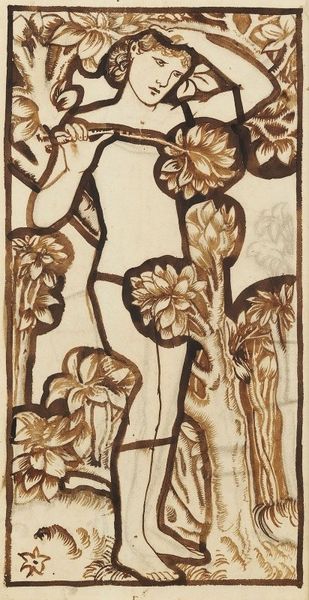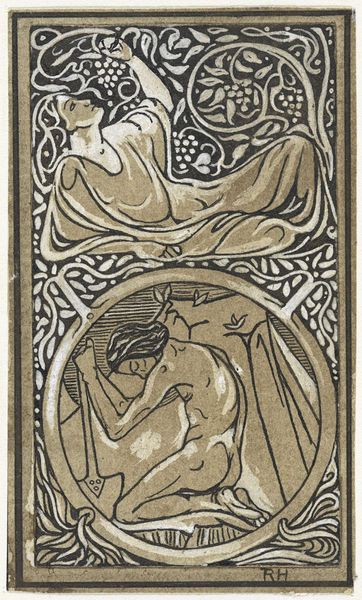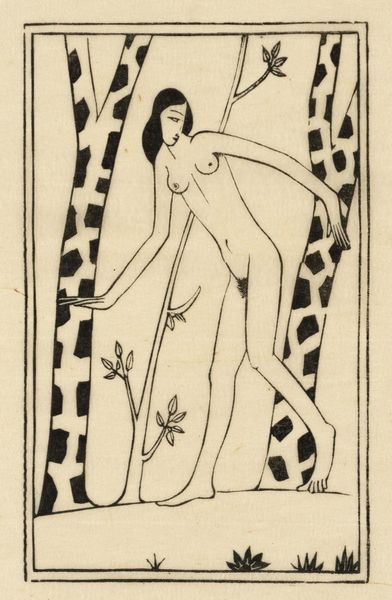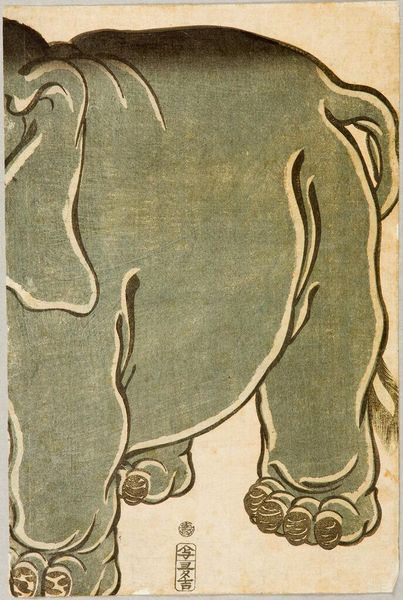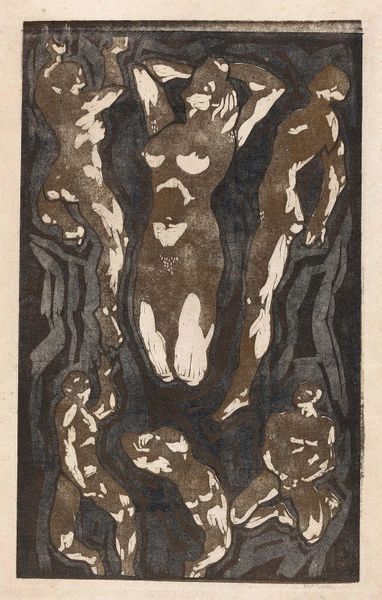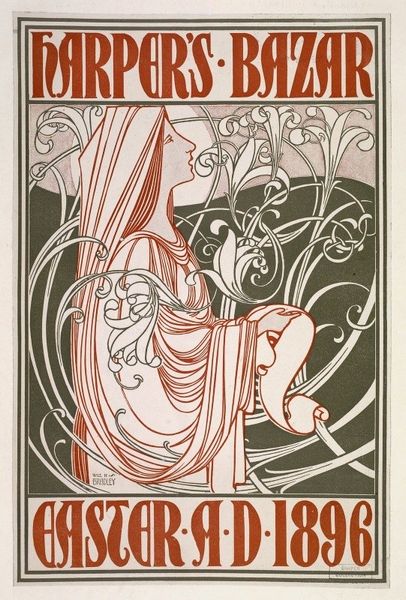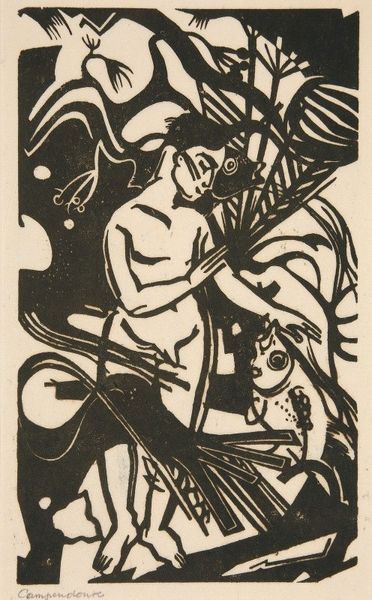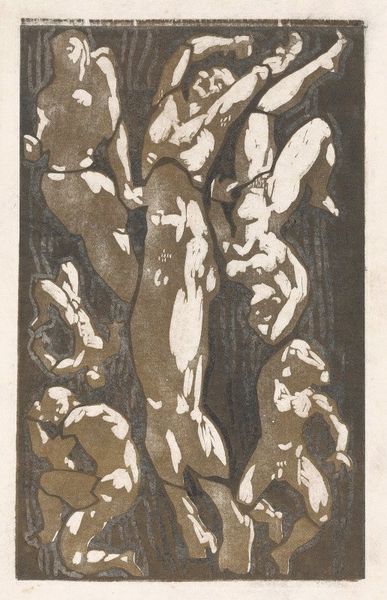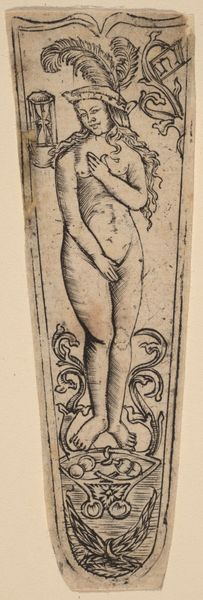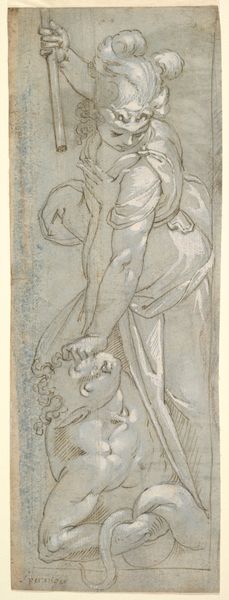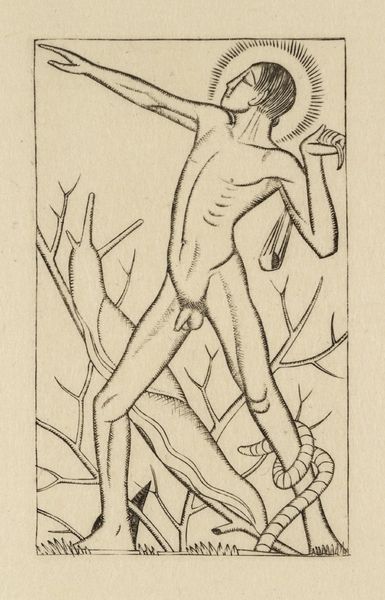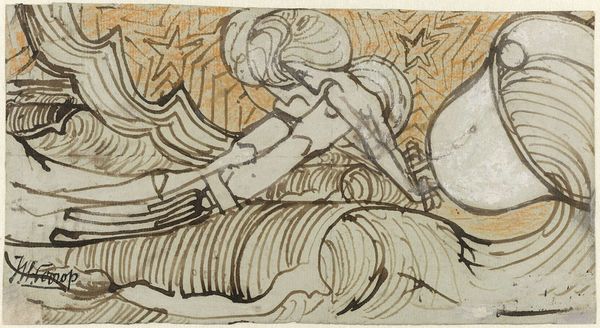
#
toned paper
#
ink painting
#
henna art
#
possibly oil pastel
#
tile art
#
fluid art
#
acrylic on canvas
#
coffee painting
#
portrait drawing
#
tattoo art
Copyright: Public Domain: Artvee
Curator: It strikes me as having a Pre-Raphaelite stained-glass quality, though I note the earth-toned palette makes it feel warmer than many typical examples of that style. Editor: Yes, and it's interesting because Edward Burne-Jones rendered "Eve" here in 1862 using pen and brown ink on toned paper. I’m intrigued by that choice. He often explored themes around labor, but here, in the single-color choice of brown ink, one begins to imagine his labor in making this piece with only the means to illustrate, not paint, his subject. Curator: Well, considering Eve’s iconic status, particularly in Western art, it's remarkable how Burne-Jones approaches the subject. Look at how she’s framed by the tree, laden with symbolic weight. Editor: Right, and consider the commercial and manufacturing context that influenced Burne-Jones. Wallpaper and textile design were on the rise at the time. I would even argue it prefigures design aesthetics that echo forward in later applied arts. Curator: Agreed. And note the sinuous line describing her hair. I keep coming back to that. How the line creates both a sense of flow but also containment. The lines contain her image as does perhaps her position in the creation narrative. The apple and even her hand obscure her form, yet, still she faces away into a near middle-distance that almost suggests future apprehension. Editor: So much in art production relies on readily available resources. Ink was plentiful, of course, and paper was undergoing transformations due to industrialization. Burne-Jones made conscious choices about material that impacted his style. Curator: Materially constrained, yes, yet consider the context! Religious painting often serves didactic functions, yet here the choice of Eve perhaps is symbolic in that this new, accessible print-making enabled a further didactic potential for a widening viewership. Editor: I still marvel at the technical aspect. Curator: It all boils down to that, doesn’t it? How artists grapple with what's available to create meaning, even spiritual weight in physical form. Editor: Precisely! The process informs the end. Curator: Absolutely. Thanks to examining it in this way I too have now considered an alternative position for a well-recognized Biblical figure!
Comments
No comments
Be the first to comment and join the conversation on the ultimate creative platform.
